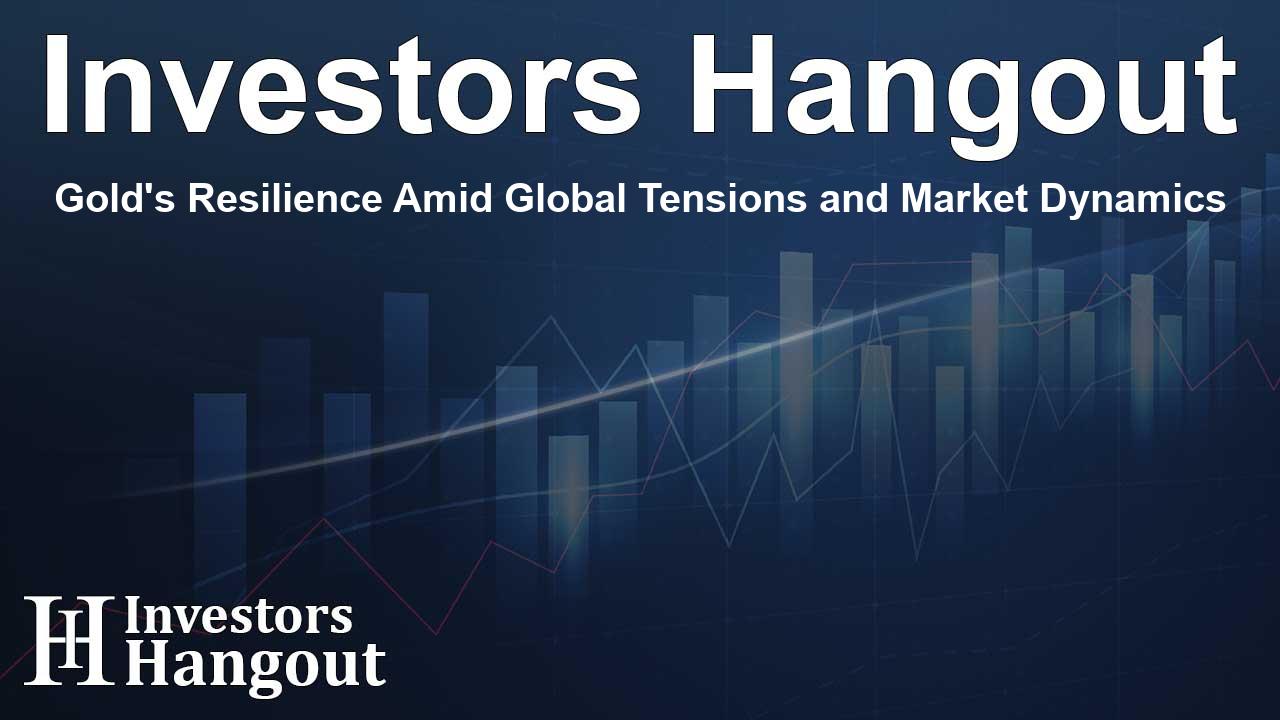Gold's Resilience Amid Global Tensions and Market Dynamics

Gold Prices Experience a Uplift Amid Global Tensions
Gold prices have seen an increase during recent Asian trading sessions, attributed largely to the rising tensions between Russia and Ukraine, which have significantly heightened the demand for safe-haven assets. This trend has allowed gold to maintain its value, even as the dollar displays strength against other currencies.
For the fourth consecutive session, gold prices have rebounded, recovering from lows not seen in over two months. However, the momentum of this recovery seems to be waning as traders are reconsidering their expectations regarding potential reductions in U.S. interest rates.
Escalating Tensions Drive Demand for Safe-Haven Assets
The recent conflict escalation has played a critical role in boosting gold demand. Following U.S. authorization for long-range missiles to be deployed by Ukraine, Russia has responded by lowering its nuclear retaliation threshold, leading market participants to flock towards gold as a protective measure.
The situation intensified further as Ukraine launched missile strikes on Russian territory utilizing Western-supplied weapons. This precarious situation has fostered fears of a broader conflict, compelling traders to gravitate towards gold as a secure investment. These geopolitical tensions have provided a cushion for gold prices, allowing for some recovery after a period of significant declines.
Market Dynamics and Gold's Struggle
Despite its recent upward trajectory, gold faces challenges from the strength of the dollar and rising Treasury yields. Recent political developments, such as Donald Trump's victory in the presidential race, have sparked initial optimism among traders, leading to the pricing in of potential future increases in U.S. interest rates.
The dollar was observed holding just below a one-year high, influenced by recent economic indicators that continued to pose uncertainty around U.S. interest rate adjustments. As inflation remains persistent, the Federal Reserve's recent communications have become notably less dovish, leading to skepticism about potential rate cuts.
With traders adjusting their expectations for December's rate decisions, the likelihood of a cut has shifted. Current probabilities indicate a 57.3% chance for a 25 basis point reduction, a notable decrease from previous estimates that reached as high as 85.7% just a week earlier. This evolving outlook is exerting pressure on gold, as increased interest rates tend to raise the opportunity cost of holding non-yielding assets such as gold.
Performance of Other Precious Metals
While gold experienced a rebound, other precious metals also reflected some upward movement amidst an overall struggle. Platinum futures were noted to have increased by 0.4%, reaching $970.35 per ounce, and silver futures witnessed a rise of 0.7%, now trading at $31.225 per ounce. However, these metals, much like gold, are similarly contending with the impacts of recent market fluctuations.
Industrial Metals Show Mixed Results
Looking beyond precious metals, industrial metals have also experienced varied performance. For instance, benchmark copper futures recorded a slight increment of 0.2%, hitting $9,109.50 per ton on the London Metal Exchange. In contrast, December copper futures dipped by 0.2%, landing at $4.1442 per pound. Concerns regarding slowing demand from China have plagued copper prices, as recent economic data and stimulus efforts have not met trader expectations.
In summary, the ongoing geopolitical situation has undeniably influenced gold prices positively by bolstering safe-haven demand. Yet, market dynamics related to inflation and interest rates continue to present challenges. As investors navigate these complex waters, the interplay between gold and broader economic factors remains critical for understanding its future trajectory.
Frequently Asked Questions
What has driven the recent rise in gold prices?
The rise in gold prices is primarily attributed to increased tensions between Russia and Ukraine, bolstering demand for safe-haven assets.
How do U.S. interest rates affect gold prices?
Higher U.S. interest rates increase the opportunity cost of holding gold, which can put downward pressure on prices, as investors may prefer interest-bearing assets instead.
What are the current market trends for other precious metals?
Other precious metals like platinum and silver have seen modest increases but also face challenges in the current market climate.
How do geopolitical tensions influence commodity markets?
Geopolitical tensions typically drive investors towards safer assets like gold, leading to price increases as demand rises amid uncertainty.
What influences copper prices specifically?
Copper prices are greatly impacted by industrial demand and economic indicators, particularly from major economies like China, which is currently facing slowing demand.
About Investors Hangout
Investors Hangout is a leading online stock forum for financial discussion and learning, offering a wide range of free tools and resources. It draws in traders of all levels, who exchange market knowledge, investigate trading tactics, and keep an eye on industry developments in real time. Featuring financial articles, stock message boards, quotes, charts, company profiles, and live news updates. Through cooperative learning and a wealth of informational resources, it helps users from novices creating their first portfolios to experts honing their techniques. Join Investors Hangout today: https://investorshangout.com/
Disclaimer: The content of this article is solely for general informational purposes only; it does not represent legal, financial, or investment advice. Investors Hangout does not offer financial advice; the author is not a licensed financial advisor. Consult a qualified advisor before making any financial or investment decisions based on this article. The author's interpretation of publicly available data shapes the opinions presented here; as a result, they should not be taken as advice to purchase, sell, or hold any securities mentioned or any other investments. The author does not guarantee the accuracy, completeness, or timeliness of any material, providing it "as is." Information and market conditions may change; past performance is not indicative of future outcomes. If any of the material offered here is inaccurate, please contact us for corrections.